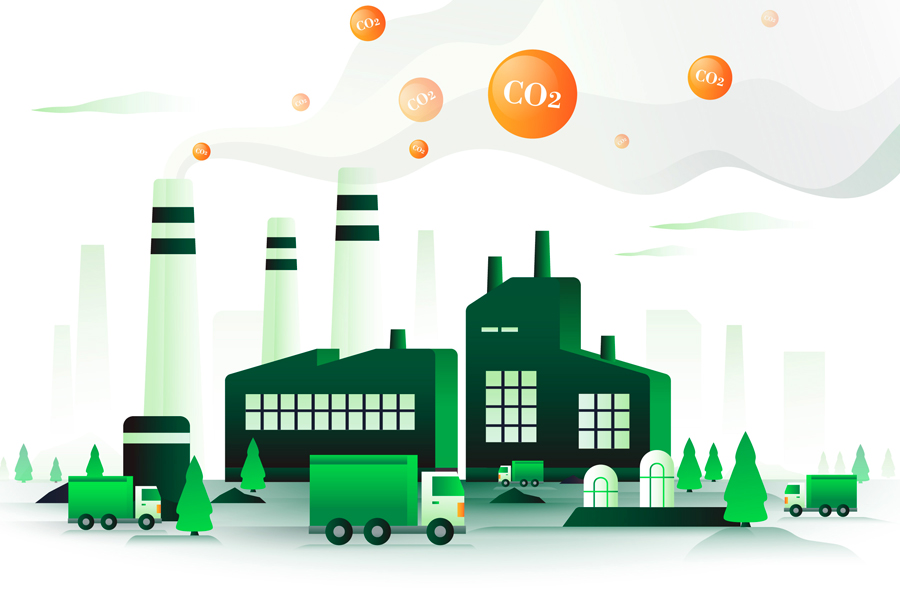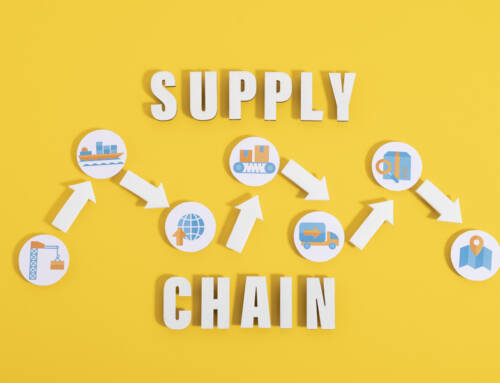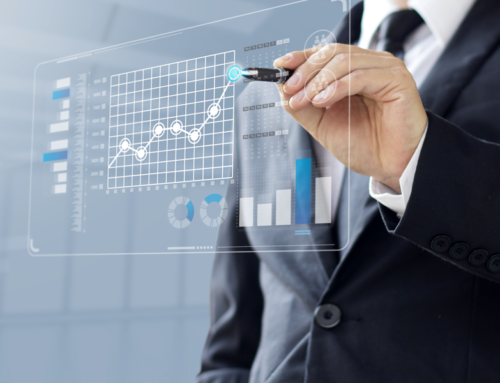As per International Energy Agency, transport CO2 emissions nearly reached the 8 Gt mark in 2022. With trucking activity expected to double, Co2 emissions are expected to grow furthermore. Take this retail Co2 emission story for instance.
Co2 emission reduction target of a Retail company chime with the times. The retailer with more than 5200 outlets deploys a vast network, translating into a staggering statistic revealing high Co2 emissions. And then the pledge to become carbon-neutral goes live.
And with the Co2 stranglehold, whether be it the brand image and reputation or the push to earn environmental-friendly label to win investor confidence, every establishment aims to measure, predict and reduce carbon emissions. And with the logistic sector becoming a major contributor of Co2 emissions, the drive to measure, predict, and reduce carbon emissions and achieve net-zero have grown into a key imperative.
Setting aside the Scope 1 and Scope 2 emissions, scope 3 emissions have become a difficult hurdle to cross for establishments. Given the importance of measuring scope 3 emissions, how do companies measure, predict and reduce Scope 3 emissions in Transportation & Logistics sector?
Scope 3 Emissions – Most Challenging
To start with, data collection is a key challenge while measuring scope 3 emissions. While Scope 3 emissions are the most challenging to address, scope 3 emissions make a resounding impact on the GHG picture. The complexity lies in using various sources including purchased services, goods, distribution and transportation, and products sold. The key challenges lie in establishing data collection across suppliers, internal data sources, customers as well as sundry stakeholders. Key challenges include:
- Finding necessary data
- Acquiring supplier-specific data
- Banking on secondary data for scope-3 emission
- Resource-intensive and time-consuming data collection
- Difficulty in maintaining scope 3 calculation accuracy when suppliers aren’t measuring emissions accurately
- Imprecise Scope 3 modelling approach derailing attempts to lower carbon emissions
- Lack of statistical expertise to infer results from small supplier samples
Putting the different mix, from the vans to trucks to boats to trains and planes, and different scenarios such as storing, reloading, returning loads, and driving without loads, determining Co2 emissions becomes complex and challenging for Logistics & Transportation establishments.
Relying on methodologies and frameworks, logistics & transportation companies are setting sight on the net-zero goal. Methodologies like GHG Protocol and GLEC Framework guides organizations to use the right data and also leverage a robust approach to conquer situations where data is not available.
How to Measure Scope3 Emissions
Scope 3 emission spreads across the enterprise’s value chain, encompassing the indirect emissions. Outgrowing the scope 1 and scope 2 emissions, scope 3 emission measurement is also a pivotal point to stay in line with the regulatory requirements, meet investor and customer preferences, manage value chain related risks and enable stakeholder transparency. Here are the methods used to measure scope 3 emissions.
| Method | Approach |
| Spend-based method | Emission factor x purchased good’s/service’s financial value
Use of three data sources comprising A company’s purchases, company’s suppliers, and relevant emission factors. |
| Activity-based | Material weight data is used instead of financial data – Emission factors x material weight data |
| Supplier-specific method | Top ranking for its accuracy – Cradle-to-gate product-level GHG data for every supplier via data collection workflows and sustainability surveys. |
| Hybrid emissions calculation | Use of supplier-specific data as well as activity-based data where possible. Gaps are filled with industry averages. |
Smart Logistics and transportation powered by ML & AI for Curbing CO2 emissions
Smart logistics uses the combination of data engineering, ML and AI to build pertinent uses cases in Logistics and Transportation aimed at measuring and reducing Co2 emissions. Here are a few use cases that champion the cause of scope 3 emissions reduction.
Predictive carbon emissions
Let’s take heavy duty vehicles for instance. Predicting carbon emissions for the heavy-duty vehicles then begins with the use of data types like Model, Make, year, Cylinders, Engine Size, Fuel Type, Fuel Consumption, Co2 ratings, Co2 emissions and using ML algorithms like decision trees and linear regression.
Full Backhaul miles with AI & ML
A company with big fleet operations was underperforming in terms of fulfilling their backhaul miles. Infusing the prediction optimization algorithm powered by ML models, it won the backhaul freight challenge meeting its need encompassing weight capacity, vehicle type, available driving time, current location as well as destination and ensured complete backhaul miles.
Curbing carbon footprint via Route optimization
A logistics company with more than 500 trucks and spoke network faced scheduling and routing problems. Services were being offered repeatedly along the same routes. With Machine learning models augmenting the operations, the company got control over its truck routing operations, saved fuel costs and cut down distances.
Real-time tracking and predictive visibility
When is it likely to get delivered?
With the customer knowing when goods will arrive, in advance, there is the scope of rescheduling which in turn increases success rates of first-time delivery and nips excessive Co2 emissions in the bud.
Evaluating Scope 3 emissions
With data engineering and ML/AI, data such as shipment volumes, consumption records, and logistics data can be integrated to get a real-time view scope 3 emissions let out by transportation activities.
Turning net-zero pledges into action, Transportation & Logistics companies seek to tap into the robust methodologies, technology, and tools to proactively measure and reduce Co2 emissions.





